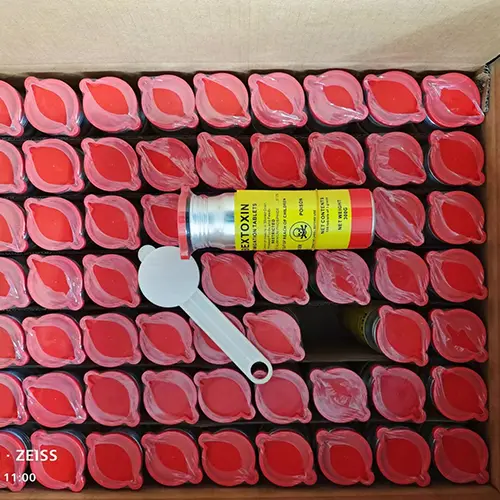Plant Growth Regulators
1.Origin
Plant growth regulators are familiar to everyone, but where do they come from?


To understand this, we need to first understand plant hormones. Plant hormones are trace organic substances naturally present in plants that have significant effects on plant growth and development, they are also known as natural plant hormones or endogenous plant hormones. These trace organic substances can effectively regulate all stages of plant growth and development. They influence the entire life cycle of plants, from cell growth and division to rooting and germination. They also affect flowering, fruiting, ripening, and abscission.
Plant growth regulators are chemicals that control plant growth. Some are synthetic, others natural. Farmers use them to improve growth, yield, quality, and crop resistance.
2.Classification
Plant growth regulators can be classified into five categories based on their effects on plants: plant growth promoters, plant growth retardants, plant growth inhibitors, preservatives, and drought-resistant agents.
(1) Plant growth promoters can improve crop growth efficiency and facilitate the transition from vegetative to reproductive growth, increasing fruit set and yield.
(2) The mechanism of action of plant growth retardants is primarily to reduce shoot growth, promote flower bud formation, improve fruit set, delay ripening, and increase firmness and storage resistance.
(3) Plant growth inhibitors can completely inhibit shoot tip growth and have a permanent inhibitory effect on crops. They promote the transition from vegetative to reproductive growth, reduce pre-harvest fruit drop, and accelerate the ripening period.
(4) Preservatives: These have protective and therapeutic effects, inhibiting the respiration and cell proliferation of pathogens. They are mainly used for post-harvest treatment of fruits and vegetables.
(5) Drought-resistant agents: Chemical mulching agents can effectively prevent soil moisture evaporation, improve root water absorption, and effectively reduce plant transpiration.
3.Common plant growth regulators
| Gibberellin | Gibberellin is long-lasting, efficient, stable, and safer than other plant growth regulators. Spraying it at the seedling stage promotes roots and prevents disease, during the growing season it boosts stem and leaf growth and balances nutrition, and during flowering it protects flowers and fruits, enlarges fruits, improves appearance, and helps control crop diseases. |
| Forchlorfenuron CUUP | It promotes bud development, cell division, enlargement, and organ formation. It boosts root, stem, leaf, and fruit growth, improves fruit set, reduces drop, and delays leaf senescence, resulting in uniform fruits, better quality, and higher yield. At high concentrations, it can also act as a herbicide. |
| Compound Sodium Nitrophenolate | This broad-spectrum plant growth regulator promotes protoplast flow, strengthens cell vitality, and accelerates plant growth and development. It stimulates the growth of roots, stems, leaves, and fruits, protects flowers and fruits, boosts yield, and enhances crop resistance. The product shows low toxicity, leaves no residue, and causes no pollution. Farmers can use it alone or add it to fertilizers, and it works effectively as a fungicide, synergist, and fertilizer enhancer. |
| S-ABA | Besides inducing leaf drop, it also regulates seed and embryo development, induces bud dormancy, inhibits cell elongation, closes stomata, and promotes tuber formation in potatoes. It increases plant resistance to adverse conditions and provides protection against salt, heat, and cold stress. |
| 2,4-D | At low concentrations, it promotes plant growth, prevents flower and fruit drop, and induces parthenocarpy. Applying a low-concentration aqueous solution to tomato flowers prevents flower and fruit drop, produces seedless fruits, and accelerates fruit growth. High-concentration solutions support flower and fruit thinning, weed control, and other uses. |
| Chlormequat | Farmers mainly use it on barley, wheat, and rice to make plants shorter and sturdier, reducing lodging. In cotton, it controls excessive vegetative growth, improves plant structure, and increases yield. |
| Paclobutrazol | Its main function is to dwarf the plant and promote lateral growth, making the stem thicker, the leaves upright, and increasing tillering or branching, so that young trees can flower earlier and reach full production earlier. |
| Brassinolide | Its main role is to regulate plant growth and development by promoting cell elongation and division, strengthening resistance to drought, cold, and diseases, and improving crop yield and quality. It also enlarges fruits, delays leaf senescence, and provides synergistic effects with various pesticides. |
| Triacontanol | It promotes plant growth, increases yield, and improves quality. It enhances photosynthesis, increases chlorophyll content, improves enzyme activity, promotes cell division, improves cell permeability, and enhances the drought and cold resistance of crops. |
4.Precautions
(1) Precise dosage: Plant growth regulators are highly active, so users must follow the recommended concentration in the product instructions. “Better low than high.”
(2) Do not mix arbitrarily: Many farmers incorrectly mix plant growth regulators with other insecticides and fungicides when treating seeds. Users must carefully read the instructions and conduct tests before use to avoid phytotoxicity. Ethephon, a strong acid, cannot mix with alkalines; amino acid esters decompose in alkali and avoid alkaline pesticides or fertilizers.
(3) Test before promotion: For new varieties or first-time regulators, conduct small-scale trials to ensure safety and effectiveness before large-scale application.
(4) Plant growth regulators cannot replace fertilizers, as they do not provide essential nutrients. When plants show poor growth, farmers should first increase fertilization and watering. Only then can growth regulators effectively enhance plant development.
(5) Pay attention to seed condition: For old seeds with weak vigor, the use of regulators requires even more caution.






